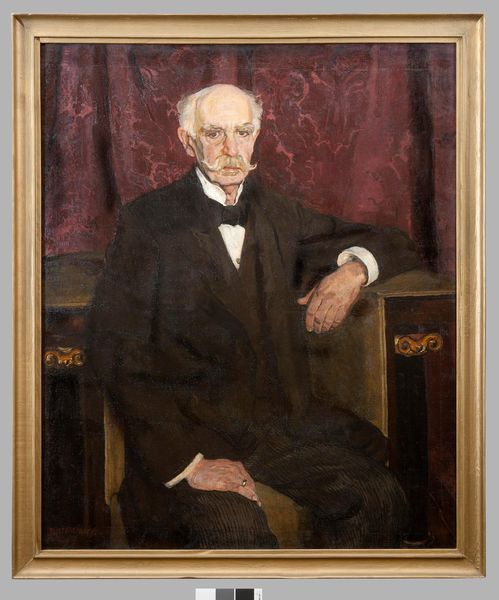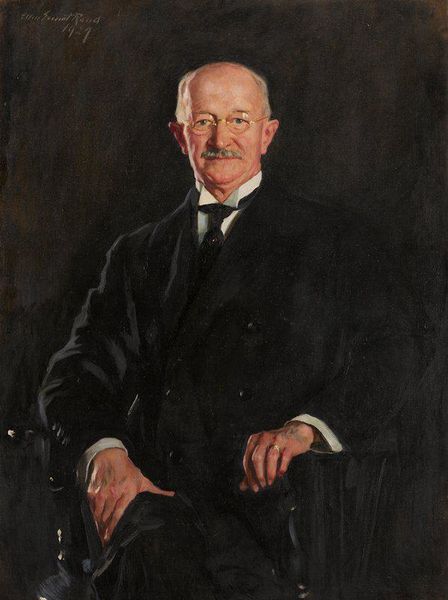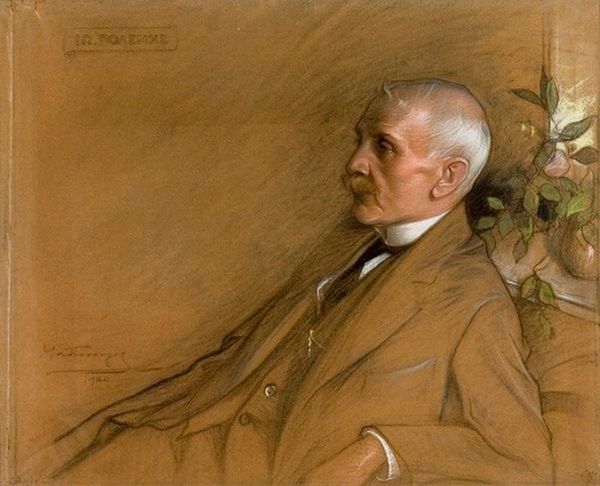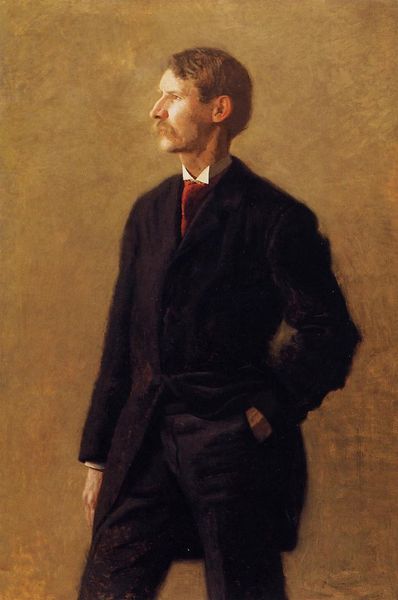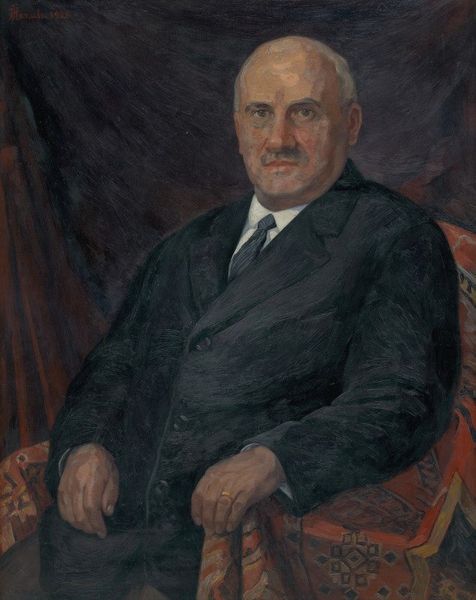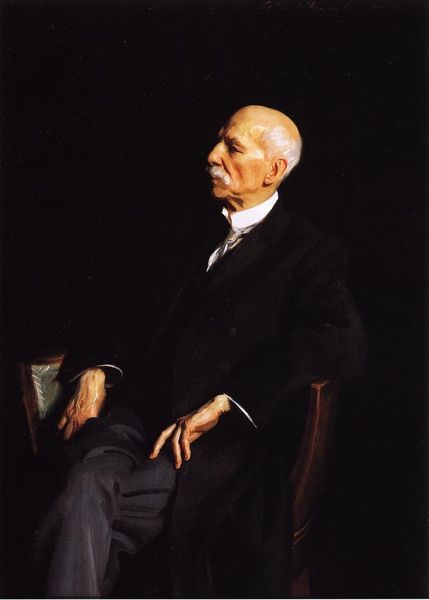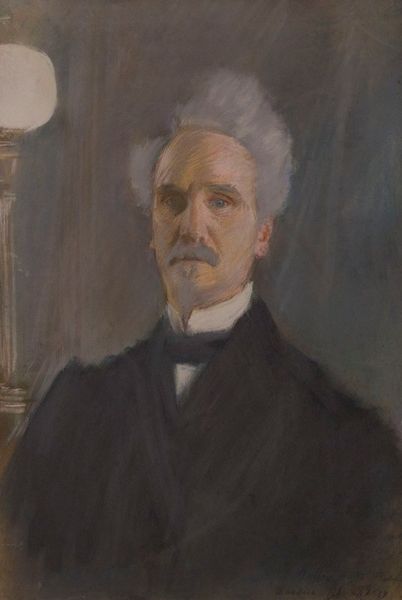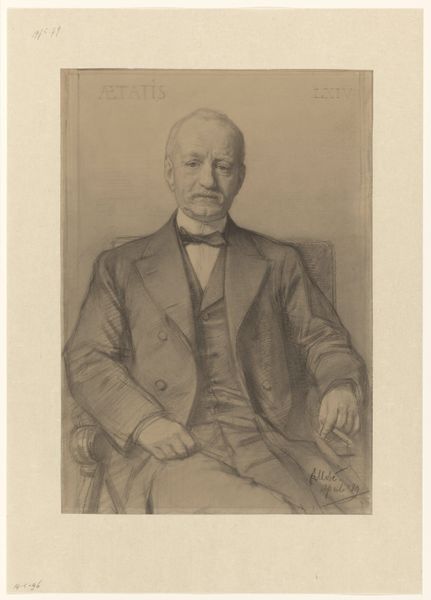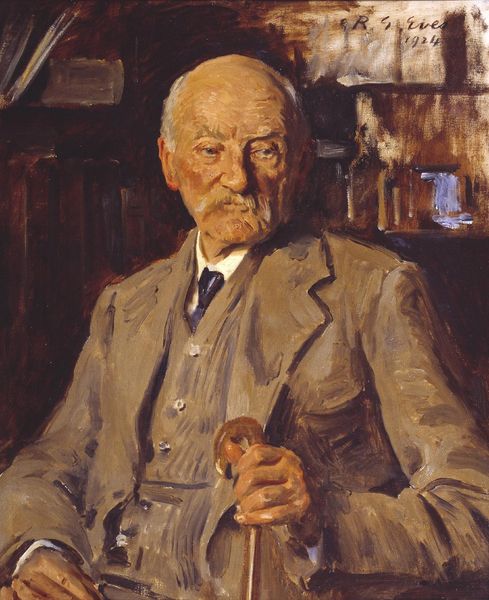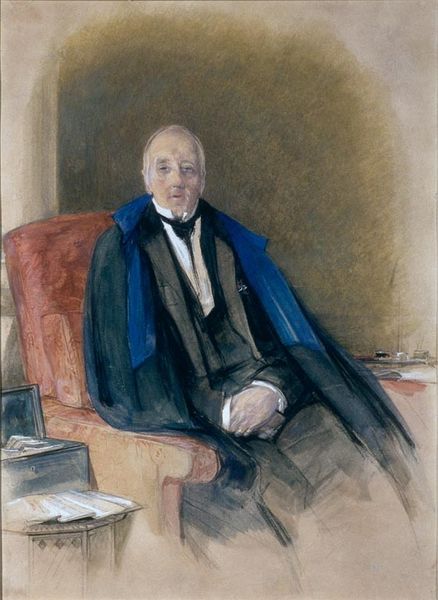
oil-paint
#
portrait
#
oil-paint
#
oil painting
#
modernism
#
realism
Copyright: Public domain
Curator: Welcome. Here we see George Washington Lambert's 1928 painting, "Portrait of Julian Ashton". It's an oil painting, depicting the artist Julian Ashton in a moment of relaxed repose. Editor: He seems at ease, doesn’t he? But there’s something about the color palette, almost muted except for the deep reds, that creates a slightly melancholic atmosphere. And the angle—it feels very intimate, as if we've stumbled into a private moment. Curator: It's fascinating how Lambert, himself a notable portraitist of the era, captures Ashton, another prominent figure in the Australian art scene. Ashton founded the Julian Ashton Art School in Sydney. He really influenced generations of artists. You get a sense of artistic legacy. Editor: Definitely. It also makes me think about the politics of portraiture – who gets immortalized, whose image is valued and preserved? It's all about power, influence, and social standing. But that gaze of his, it projects confidence and a certain level of intellectual authority. Curator: Well, portraiture was often commissioned, solidifying social hierarchies. Lambert here portrays Ashton surrounded by symbols of erudition and leisure: the book, decanters, fruit basket. These objects emphasize a particular kind of cultured masculinity that was very much a construct of the time. Editor: Agreed. And note his hand holding what seems to be a cigar. While he might appear simply relaxed, the painting reveals a subtle interplay of symbols reinforcing the societal position Ashton occupies. There's also an open picture frame behind him, could that be about the gaze that creates value, enshrining someone's position? Curator: I'd say so. Looking at Lambert's technique, there's a loose, painterly quality, typical of modernism, moving away from strict academic realism but hinting at a historical lineage nonetheless. He captures the likeness, but with a certain impressionistic flair. Editor: I like that tension—between representation and artistic license. It keeps the work interesting. It forces us to consider not only Ashton, the man, but also Lambert, the artist shaping our view of him. What position will they both take up within art's broader history? Curator: Exactly. Ultimately, it’s a painting that speaks to the networks of influence in the art world. A portrayal of artistic legacy. Editor: Yes, layers within layers. I'll be pondering this one for a while, I think.
Comments
No comments
Be the first to comment and join the conversation on the ultimate creative platform.
